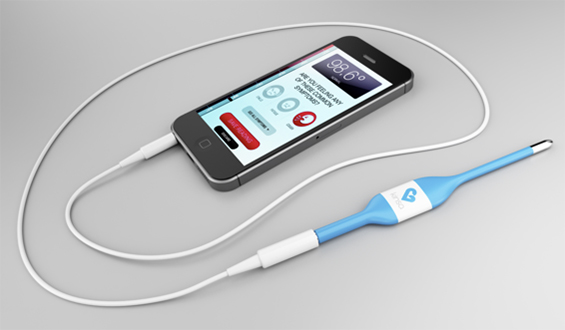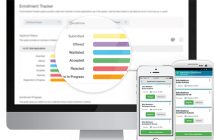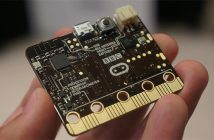
One elementary school has partnered with a San Francisco-based startup in the creation of a smartphone application that they hope will prevent the spread of illnesses.
Eastridge Community Elementary School in Aurora, Colorado was selected earlier this year to participate in the FLUency program, which makes use of a mobile application to offer parents and school officials the ability to keep track of each students’ health using smartphone-enabled thermometers.
“The program is a way for schools to keep their communities healthier by knowing more about what’s going on around them,” said Nita Nehru, marketing and community manager for Kinsa, the startup spearheading the program. “We have so much access to knowledge around us with Google Maps and Waze and Foursquare, but we have very little information about when and where symptoms and illnesses are starting.”
Program participants receive free thermometers that have the capability to automatically and anonymously upload fever symptoms specific to their child’s school within the Kinsa app. Additional symptoms such as runny noses or other pains can be uploaded manually, reports Nelson Garcia for 9News.
Nehru said the app allows parents to discover a flu going around the school before an entire group of children is infected, writes Quincy Snowdon for The Aurora Sentinel.
There are currently about 40 schools across the country participating in the program. So far, over 1,000 schools have applied to take part. Eastridge was chosen after Brandon Loy, the school nurse, showed interest.
Loy said the program has been working well so far in the school, but because it has only been two weeks, not enough time has passed to tell if it is having any effect on students’ overall health. She said that she hopes more families will join in. As of November 21, there were 127 Eastridge users of the app. Nehru said in all, the app has a little over 4,000 users.
The app is in its first full school year of use, but saw a high level of success in its pilot program last winter in which 18 schools participated. Nehru added that all of the pilot schools had less children missing school due to illnesses while the app was being used from January to March. While she said it is difficult to say that was completely because of the app, she did note that a correlation could be seen.
Nehru went on to say that one of the important goals of the app was to increase student attendance because schools lose money each time a student is absent. According to data from the state Department of Education, the cost per absence in the state amounts to $32 per student. That number is derived from a per-pupil funding formula combined with the number of days per year that children are in the classroom.
Although it remains to be seen how the app will influence attendance at Eastridge, Loy said she hopes it will influence parents to keep their children home when they are feeling under the weather, especially during flu season.




